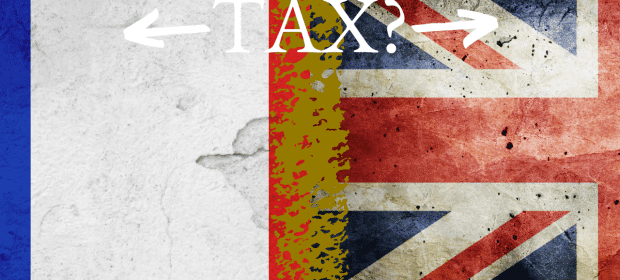If you ever worked in the UK, no matter what your nationality, the chances are you were enrolled in a private pension scheme. The UK government continues to tweak legislative changes affecting the expat’s ability to move this pension offshore. On the surface, these changes appear to limit transfer options, but in reality they have strengthened the legal framework offering expats continuing advantages.
Background
When you leave the UK your private pension fund remains valid but is frozen, or deferred, until you reach retirement age. The pension income you then receive is taxable in the UK no matter where you are based in the world. Once you die the pension will continue in the form of a spouse’s pension if you are married; otherwise it will cease. When your spouse dies, all benefit payments come to an end.
If you take any part of your fund and then die before you fully retire, a lump sum can be paid to your spouse.
In April 2006 Her Majesty’s Revenue and Customs (HMRC) introduced pension ‘A’ day. This liberalised UK private pensions and allowed people leaving the UK to transfer them overseas, often to a new employer. In doing this the UK complied with European legislation which allows all citizens the freedom of movement of their capital. Thus ‘Qualified Recognized Overseas Pension Schemes’ (QROPS) were born.
Recent Chamges 2017
During the March UK budget there was a very unexpected announcement regarding pension transfers out of the UK. The headline was :
“HM Revenue & Customs (HMRC) has announced that Qualifying Recognised Overseas Pension Schemes (QROPS) transfers for individuals not in the European Economic Area (EAA) will be hit with a 25% tax charge”.
At first glance it sent shockwaves through all concerned with pension transfers, after a moment to digest the news it became much clearer that there were exceptions to the rule, detailed below:
1. The QROPS Trustee is in the EEA and the client/member is also resident in an EEA country (not necessarily the same EEA country);
2. The QROPS and the member is in the same country; or
3. The QROPS is an employer sponsored occupational pension scheme, overseas public service pension scheme or a pension scheme established by an International Organisation (for example, the United Nations, the EU, i.e. not just a multinational company), and the member is an employee of the entity to which the benefits are transferred to its pension scheme.
It is also important to understand that if a client was to move outside of the EEA within 5 years of the transfer then the tax rate would apply.
In most of the cases I deal with this new tax ruling will not affect the transfer. Since moving to Spain all but one of the transfers I have implemented are EU based.
Implementation
QROPS are not necessarily the right thing in every single case. In order to decide whether it would be advantageous to transfer your pension or leave it in the UK, with the intention of drawing the benefits in retirement, please contact me so that I can carry out a personalised evaluation. There may be compelling arguments, outside of the evaluation alone, which are often overlooked and may affect you in the future.
One of these is that a large number of UK schemes are currently in deficit to the point that they will be unable to pay future projected benefits. This would mean that even though it looks as though there are arguments to leave your UK pension in situ it may actually be wiser to transfer it.
In order for you to make the best decision you need to professional advice on what would be the best situation for you. This will entail seeking details of the current UK schemes, including transfer values, the types of benefits payable to you and options going forward when you get to a retirement date and when you die.
Advantages & Disadvantages of a Transfer Between a QROPS and a SIPP
Advantages
Lump Sum Benefits
QROPS – If you transfer your benefits under the QROPS provisions to a Malta provider, in accordance with the rules of this jurisdiction, you may be able to take a pension commencement lump sum of up to 30% (unless you have already taken this lump sum from the UK pension). Under the current HMR&C (Her Majesty’s Revenue and Customs) rules to qualify for the lump sum option you must be age 55 or over. Your remaining fund is then used to generate an income without having to purchase an annuity. The 30% pension commencement lump sum is only available once you have spent 5 full, consecutive tax years outside of the UK (in terms of tax residence), if you are within the first 5 years, we strongly advise you to limit the pension commencement lump sum to 25%. From 6 April 2017 this 5 year period has been extended to 10 years.
SIPP – The maximum Pension Commencement Lump sum from a SIPP would be 25%.
No Liability to UK Tax on Pension Income
QROPS – This will be paid gross and you declare the income in the country you are resident in as long as the QROPS jurisdiction has a Double Tax Treaty (DTT) with the country that you are resident in. Transferring under the QROPS provisions ensures that, if tax is due on pension income, it will only be taxable in the country of your residence.
SIPP – This should be able to be paid gross, although many clients find this to be a very awkward process to solve as the pension company does not always talk to the HMRC and therefore at least for the first year or two the pension is paid net of basic rate tax and sometimes even on an emergency tax basis. This can be reclaimed, but will involve more paperwork than that of a QROPS.
No Requirement to Purchase an Annuity
There is no longer a requirement to ever purchase an annuity with either your UK pension or in the event you make a transfer under the QROPS provisions. Therefore the rules below are the same for a QROPS and a SIPP.
With both a QROPS and a SIPP the maximum age you must start to draw an income is from age 75. The Pension commencement Lump Sum must be taken by this age or the option to take it after this age is lost.
The budget changes in the UK has meant that from April 2015 the restrictions imposed from drawing a pension income from a UK Pension Plan will be scrapped. This means that investors will be able to take the whole of their pension as a lump sum if they wish from age 55. The first 25% would be the standard Pension Commencement Lump Sum but the remaining amount would be subject to your marginal rate of income tax. The Malta QROPS have now followed these changes to allow full flexibility also.
This would not be possible with a Final Salary pension. It would need to be transferred to a SIPP or QROPS to utilise these options.
Secure Your UK Pension Pot
Some defined benefit schemes in the UK are in deficit. Since the deficit forms part of the balance sheet of the company, this can present a huge risk to your pension fund.
Transferring your UK benefits to a SIPP or QROPS provisions could enable you to have full control of these funds without worrying about the financial situation of your previous employer.
Ability to Leave Remaining Fund to Heirs
QROPS – All death benefits will be paid out from the Malta QROPS with 0% death tax no matter what age an individual is.
SIPP – The recent UK Budget has changed how death benefits will be paid to their heirs in the future. If death occurs before age 75 then any remaining balance in a pension fund can be paid tax free to any beneficiary. Otherwise if a member passes away after the age of 75 then there would be a tax charge, any lump sum benefit would be subject to the beneficiaries marginal rate of income tax.
A transfer under the QROPS provisions will allow the member to leave lump sums without deduction of tax to heirs no matter what age they pass away, so it is clear and simple. (this is not applicable to Defined Benefit schemes). The below table shows the situation more clearly.
Defined Benefit Plans
UK Pension –
(generic pension benefits) |
|
|
|
Scenario |
Death Benefits |
| SRA |
Married couple 1st to pass away |
50% income to Spouse |
|
Married couple 2nd to pass away |
0% of total plan |
|
Single but with grown up children |
0% of total plan |
|
Lump sum to future heirs |
0% of total plan |
| QROPS- Malta |
|
|
|
Scenario |
Death benefits |
| SRA |
Married couple 1st to pass away |
100% of fund value to any beneficiary |
|
Married couple 2nd to pass away |
100% of fund value to any beneficiary |
|
Single but with grown up children |
100% of fund value to any beneficiary |
|
Lump sum to future heirs |
100% of fund value to any beneficiary |
SRA – Selected Retirement Age
The tables are based on the usual death benefits being taken in retirement. Some plans may have slightly different death benefits which may be higher or lower than 50% income provided on death and guaranteed periods for the first 5 years. Please check the exact benefits within your scheme for a full exact comparison.
Currency
A standard UK pension will usually only be invested and pay benefits in Sterling, which means the member runs an exchange rate risk in respect of pension income, in addition to incurring charges in converting the pension payments to the currency of their country of residence.
A transfer under the QROPS provisions means that the pension payments can be made in the local currency, thus potentially eliminating exchange rate risk.
Lifetime Allowance Charge (LTA)
QROPS – There is no LTA charge within a QROPS so transferring larger plans to a QROPS may not be caught in this reduction in the future. Careful planning will be needed with your adviser if you are close to the limit in the UK. (a transfer to a QROPS is a crystallisation event, so will be tested against the LTA at that stage, any benefits above the LTA at time of transfer will be subject to a 25% tax liability.
SIPP – This is a restriction on the total permitted value of an individual’s total accrued fund value in UK registered pensions, currently £1m. Those who exceed this value face a potential tax liability of 55% on the excess funds on retirement at any time when there is a “benefit crystallisation event” that exceeds the LTA. A benefit crystallisation event is any event which results in benefits being paid to, or on behalf of, the member and so includes transfer values paid to another pension scheme, as well as retirement benefits.
Disadvantages
Charges
QROP & SIPP If you have a pension(s) with a combined transfer value of less than £50,000 then the charges may be prohibitive.
Loss of Protected Rights
QROPS & SIPP – A transfer may result in the loss of certain protected rights, including Guaranteed Annuity Rates, Guaranteed Minimum Pension, a protected enhanced lump sum, or rights accrued under a defined benefit scheme. (These are shown in the section “Analysis of Your Existing Pensions”).
Returning to the UK
If you return to the UK, then the QROPS administrator will have to report this ‘event to HMRC and the pension scheme will become subject to UK pension regulations again.
If it is your intention to return to the UK in the near future then a transfer under the QROPS provisions is usually inappropriate. If this was the case then we can help with our UK SIPP offering which may be more appropriate.











